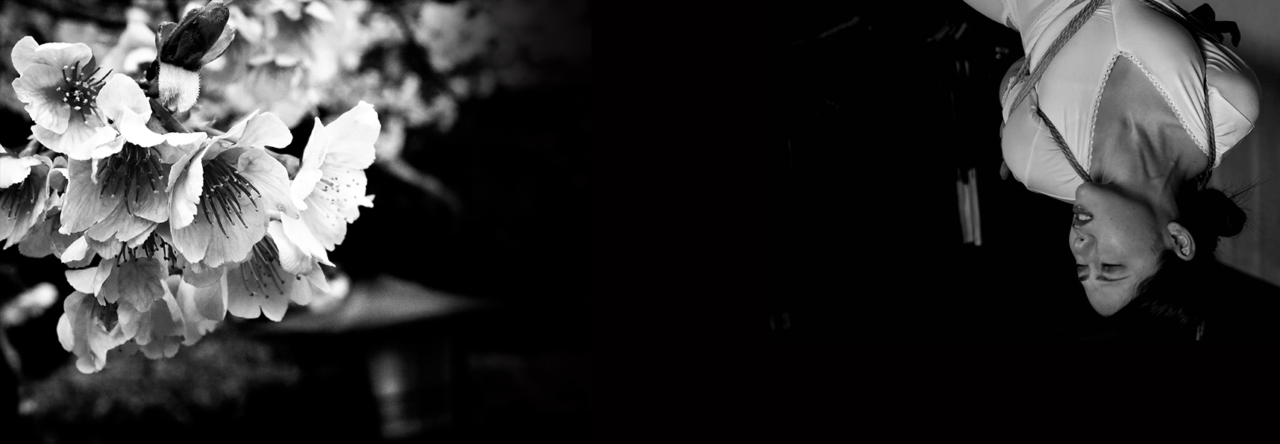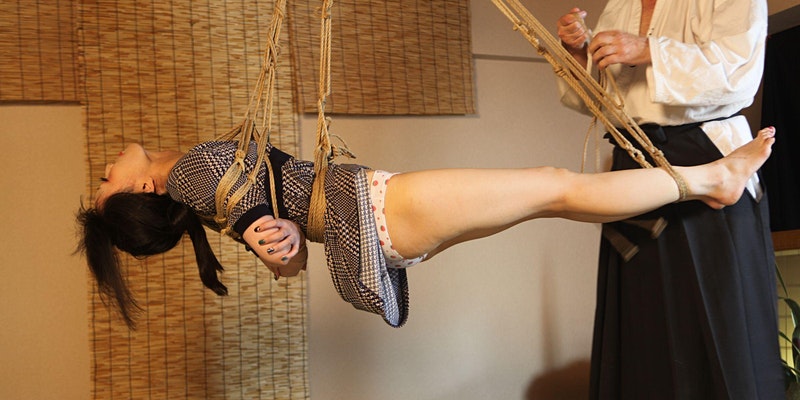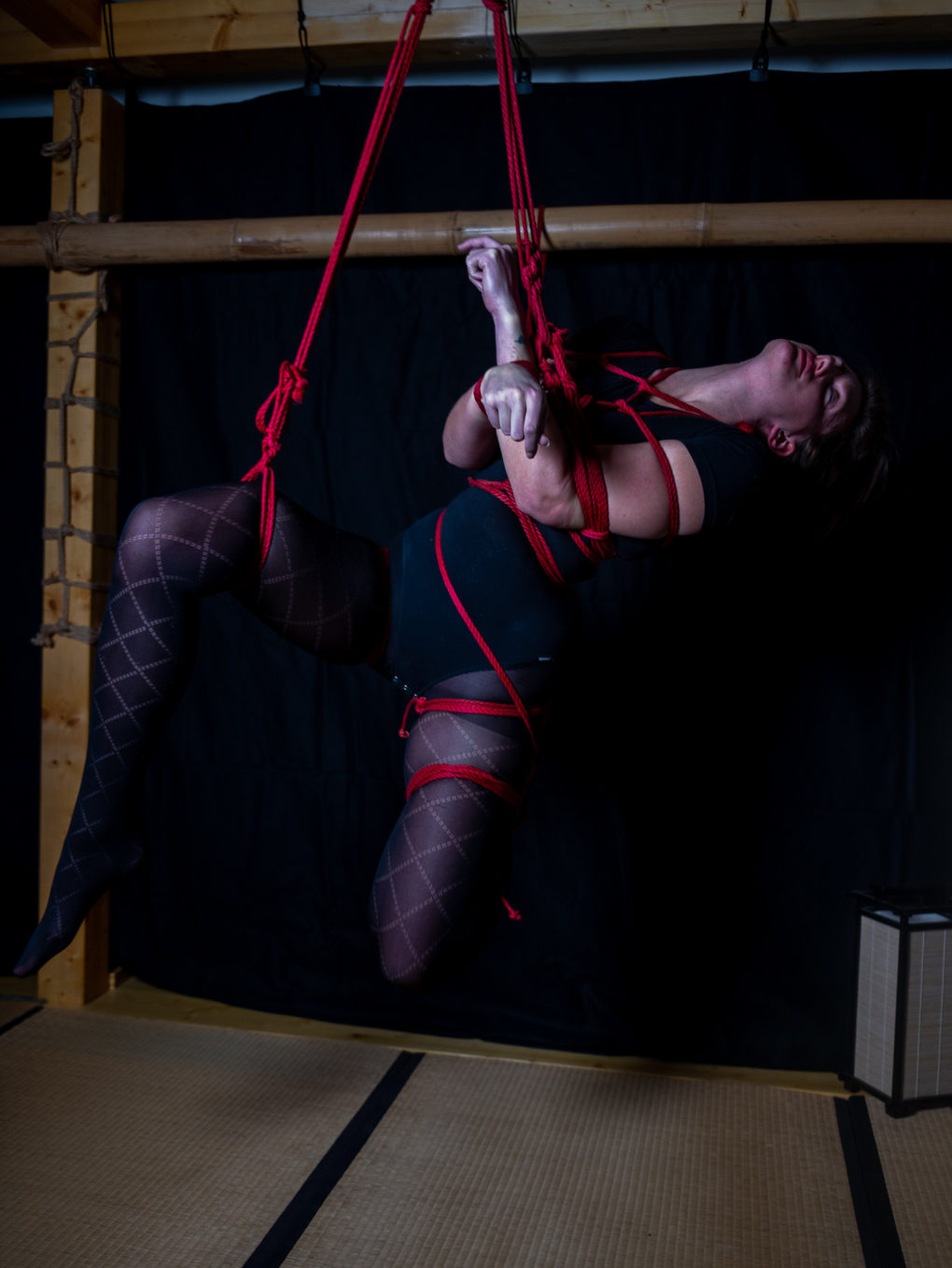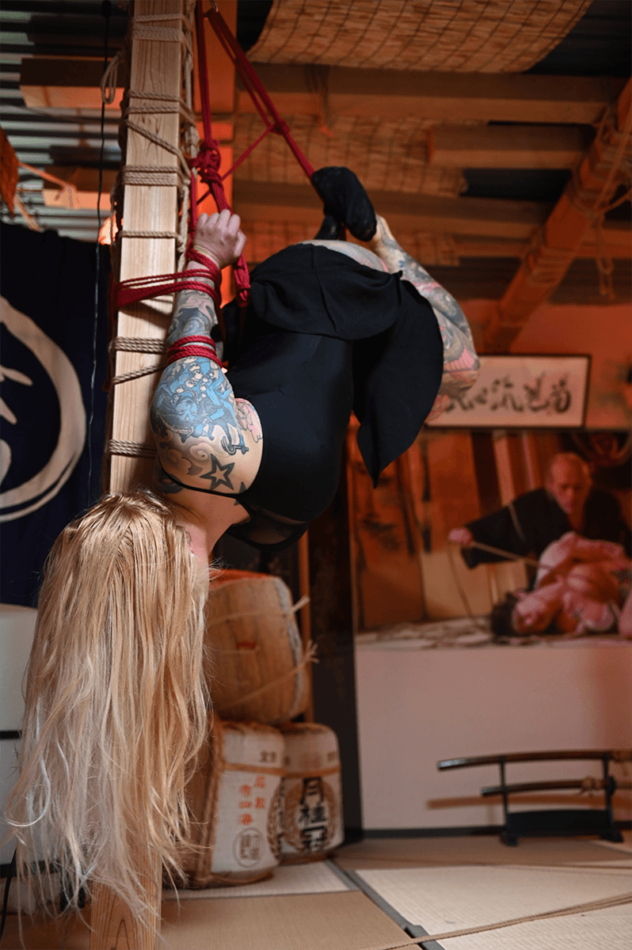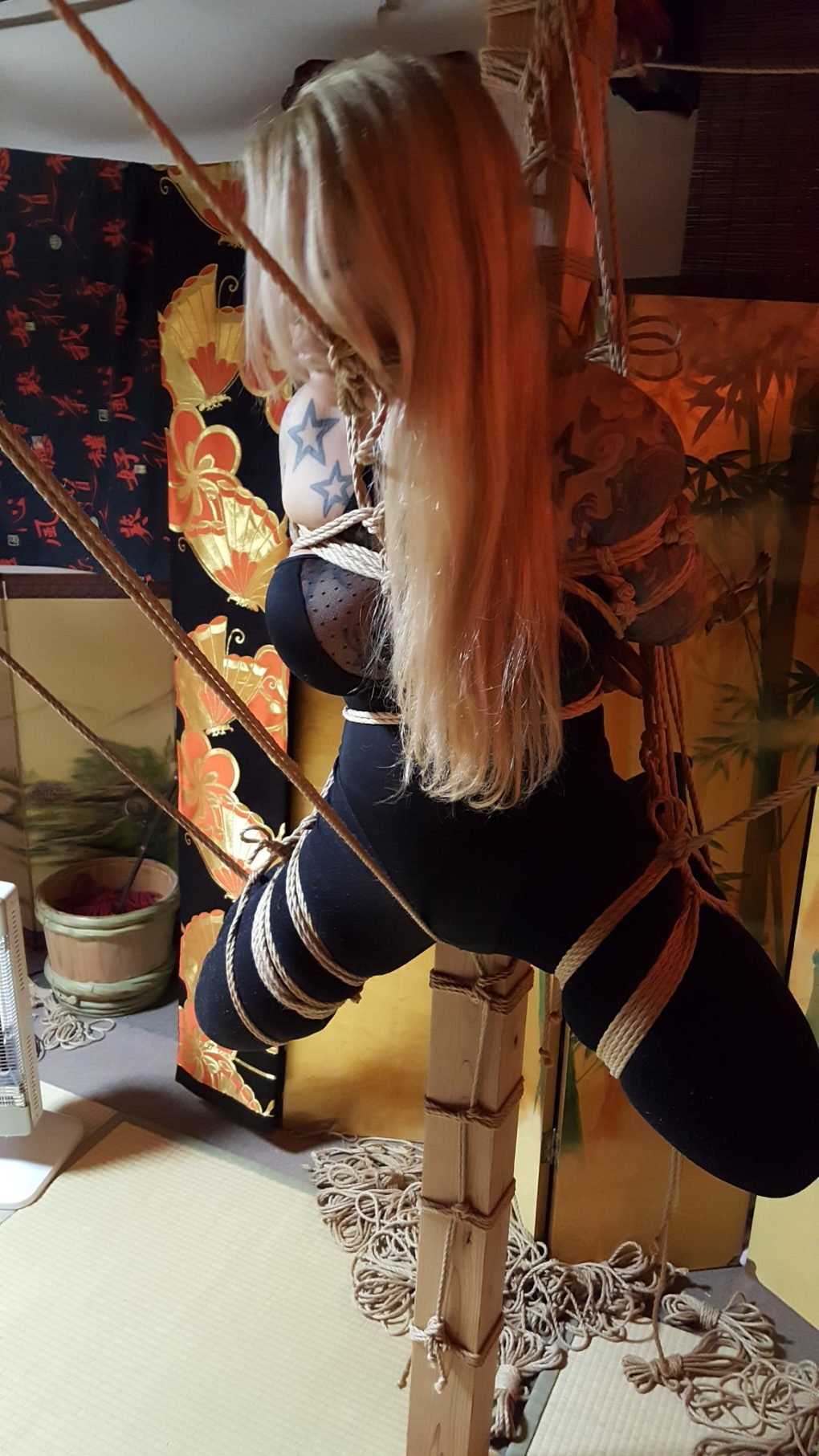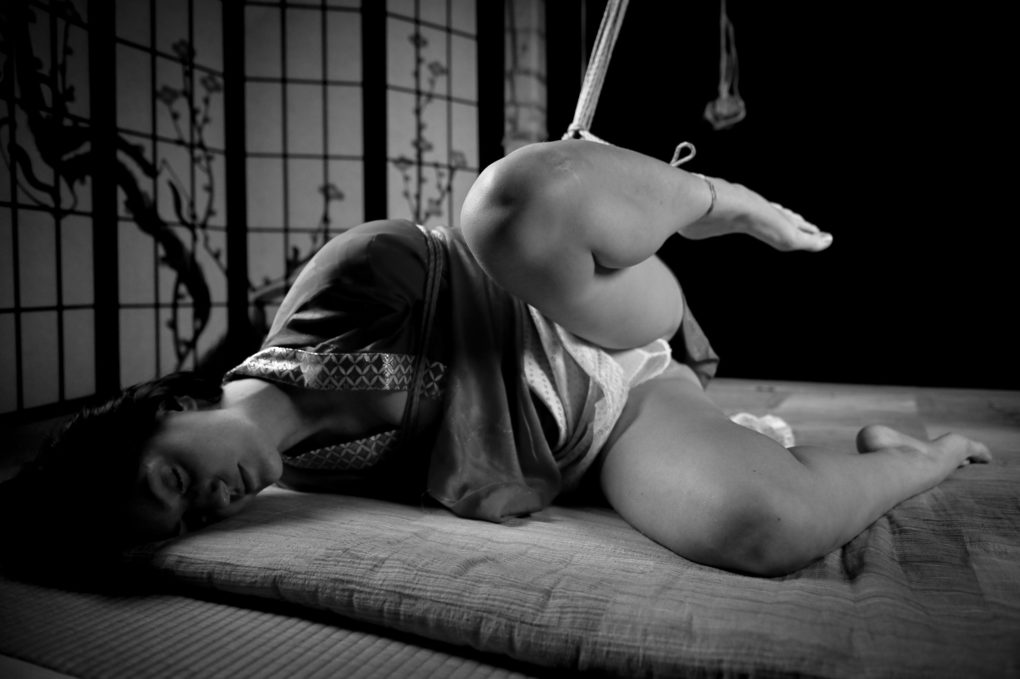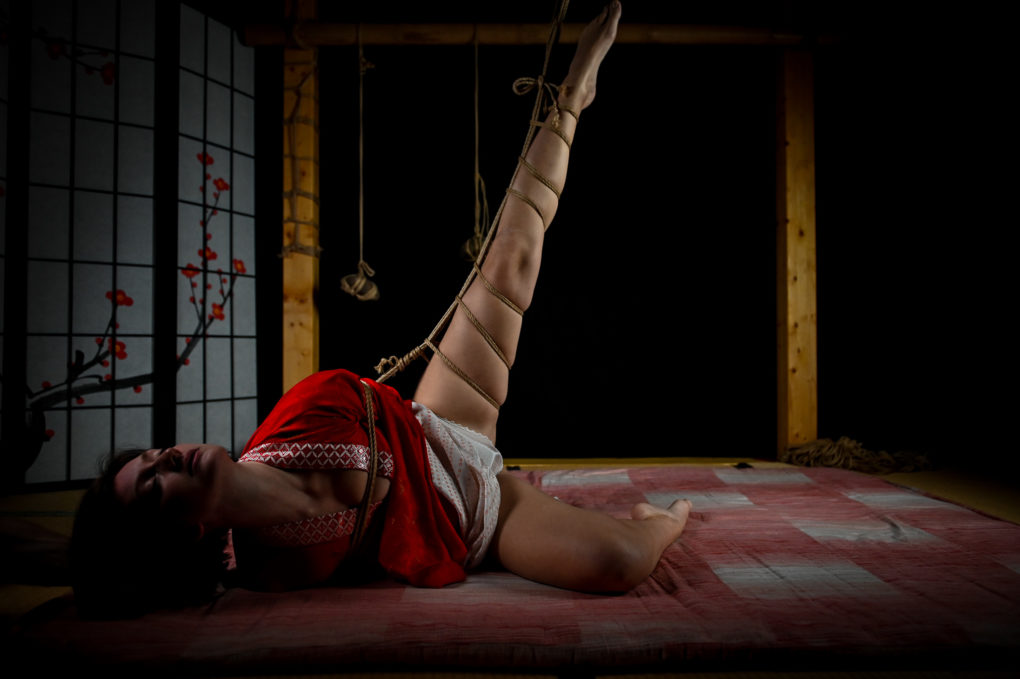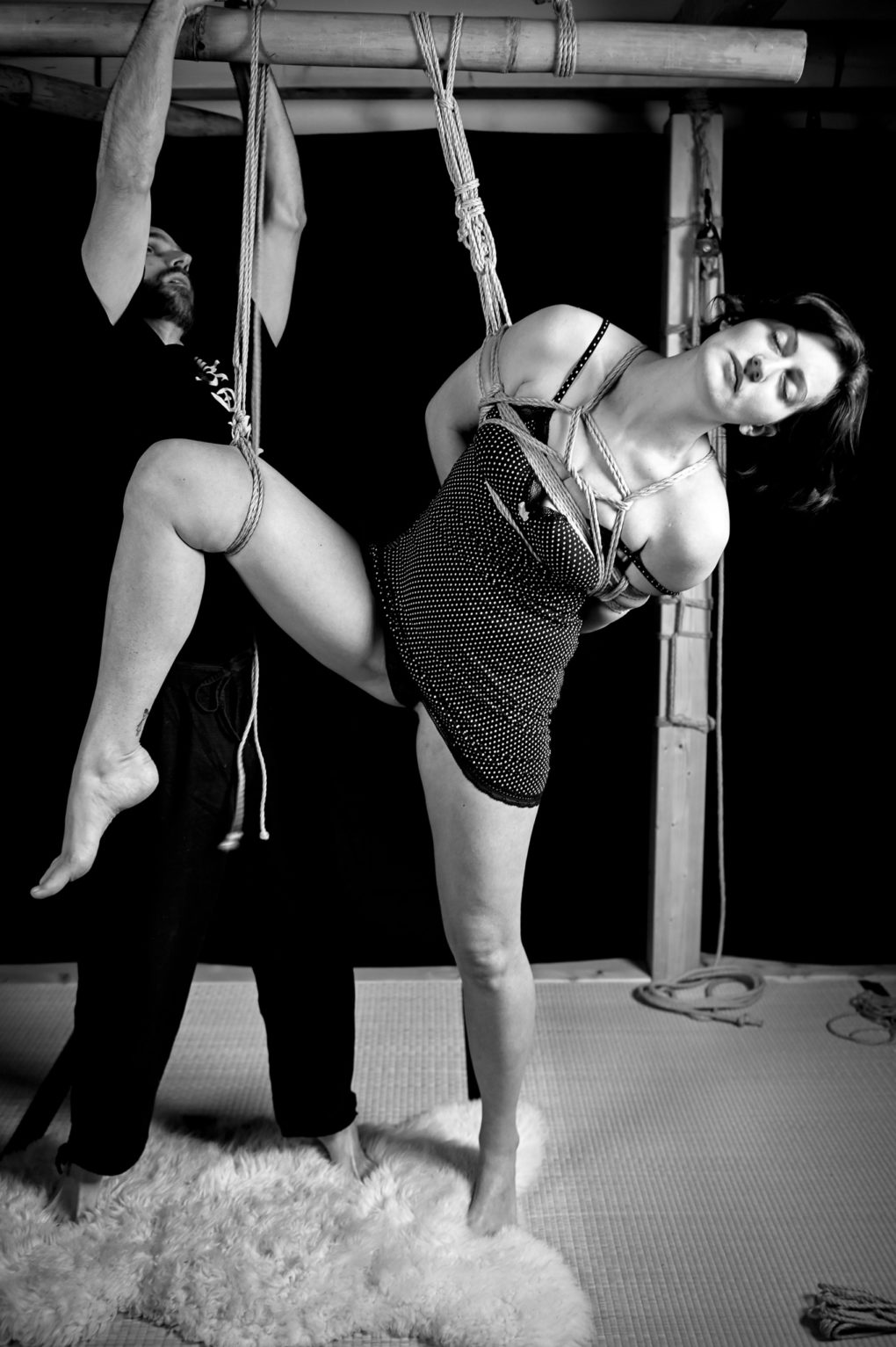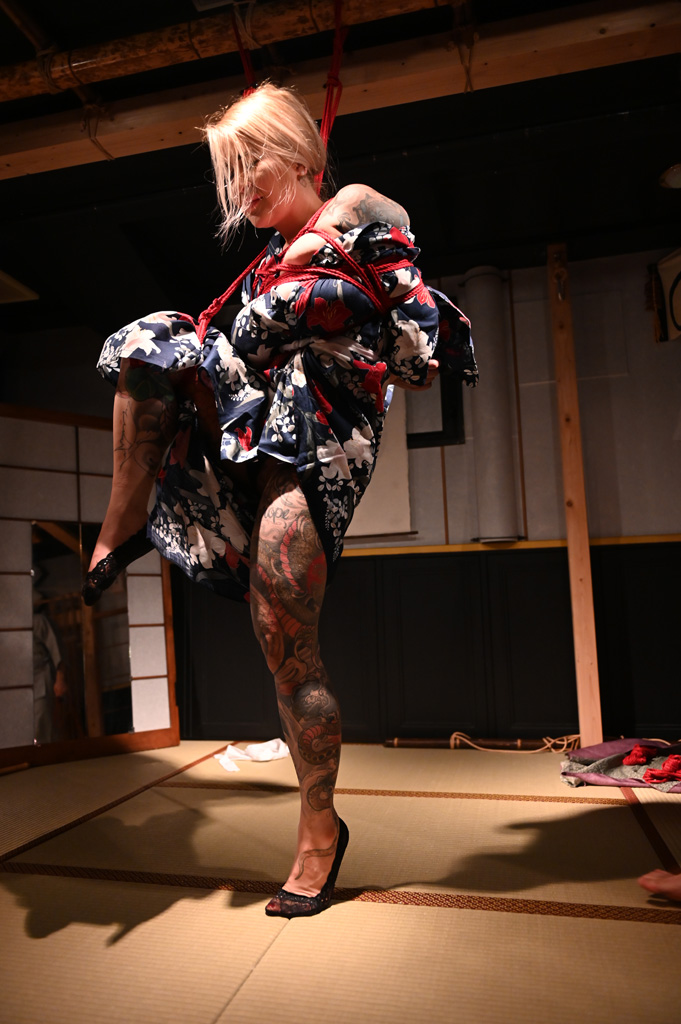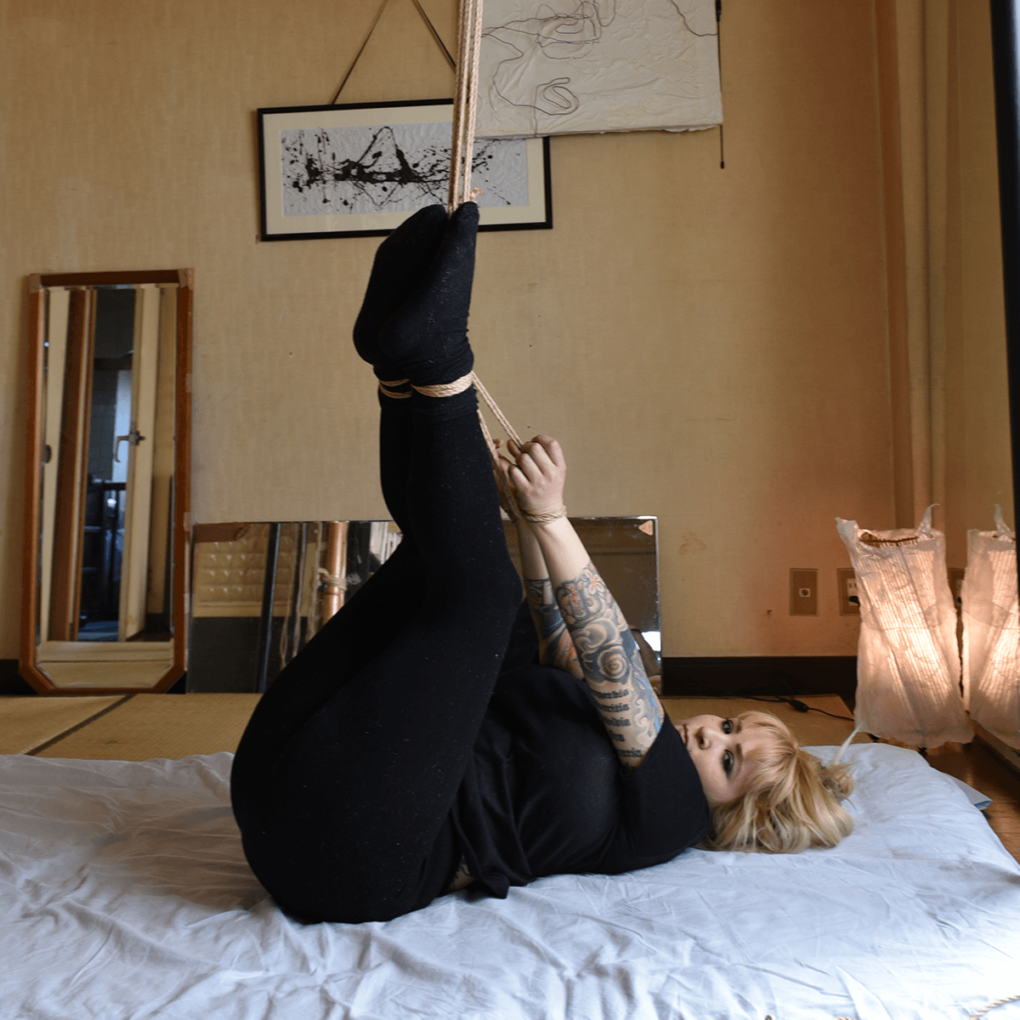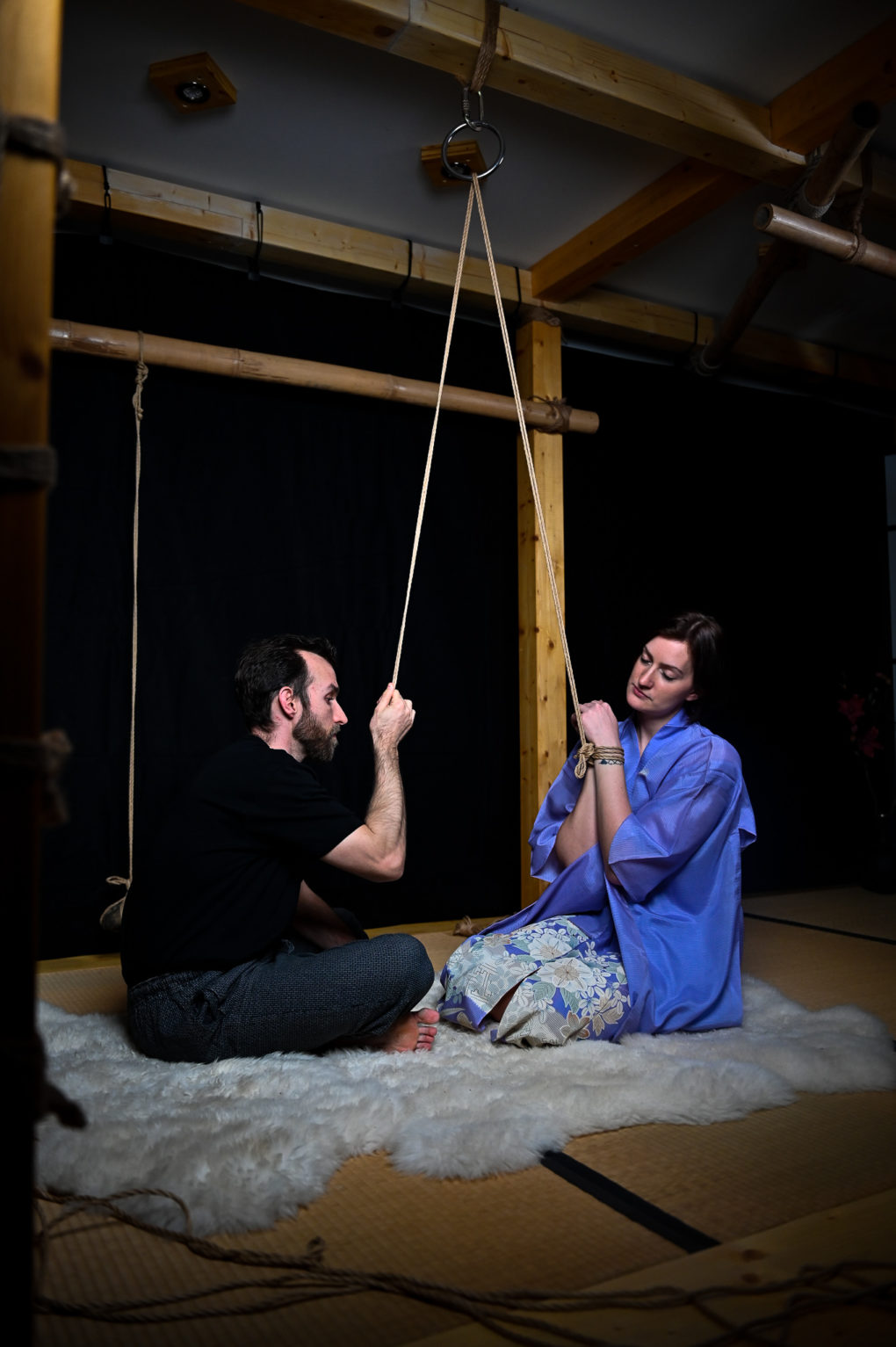Aisatsu (挨拶) means “greeting”. These shibari patterns are warm-up and familiarization exercises that are technically simple and easy to learn. Defined patterns are used in Osada-Ryû, but with the right mix of minimalism and concentration, each pattern becomes an aisatsu, for example, the marriage proposal (求婚縛り) or one-rope techniques (一本縄).
The aisatsu techniques are an excellent warm-up exercise. This makes the transition from everyday life to the shibari-encounter easier and bakushi and ukete tune into each other. A short duration of ten to 15 minutes is already enough to mentally tune into the shibari encounter or lesson.
However, these techniques have more than one function. One can also use aisatsu techniques to test ukete’s agility or explore the mood. By varying tension and distance, bakushi can make different offers to which ukete responds.
Depending on how ukete reacts, the next steps become clear. This basic technique can be further used later, when more complex patterns are executed.
Bakushi and ukete start a conversation in which bakushi asks and ukete answers. This allows both partners to steer and create a shared shibari experience.
Gentle leading plays a big role, because if bakushi works with too much energy, ukete cannot freely explore and express a reaction.

That is why slowness and attention are at the core of aisatsu patterns. Finding the right timing is also a preparatory exercise for later to be used in more complex patterns.
Technically, these patterns use simple braking techniques instead of knots and the rope does not yet have to be completely used up. That means that, for example, no Kazari is necessary. The concentration is fully on the interaction and on developing a feeling for the rope and the opponent.



